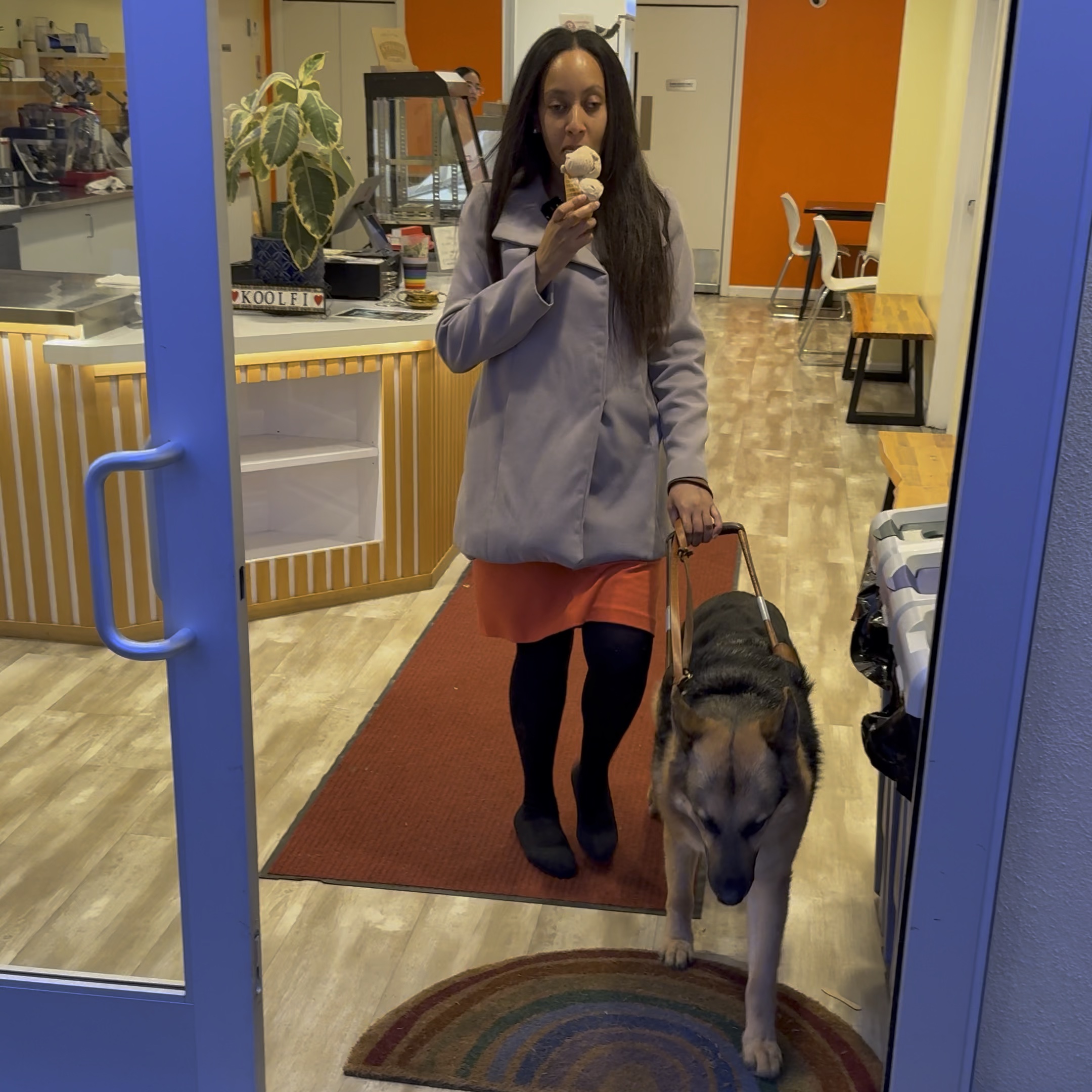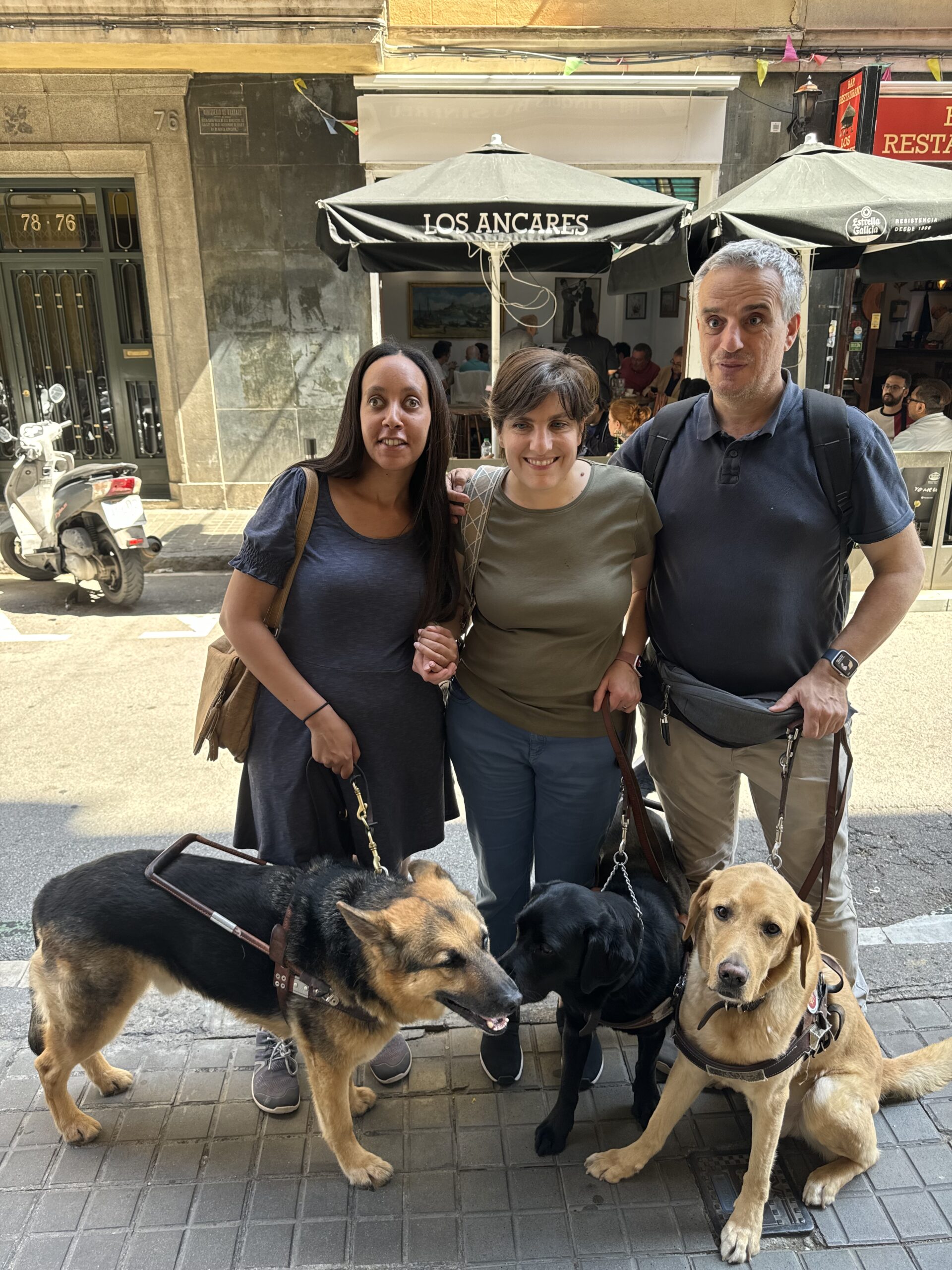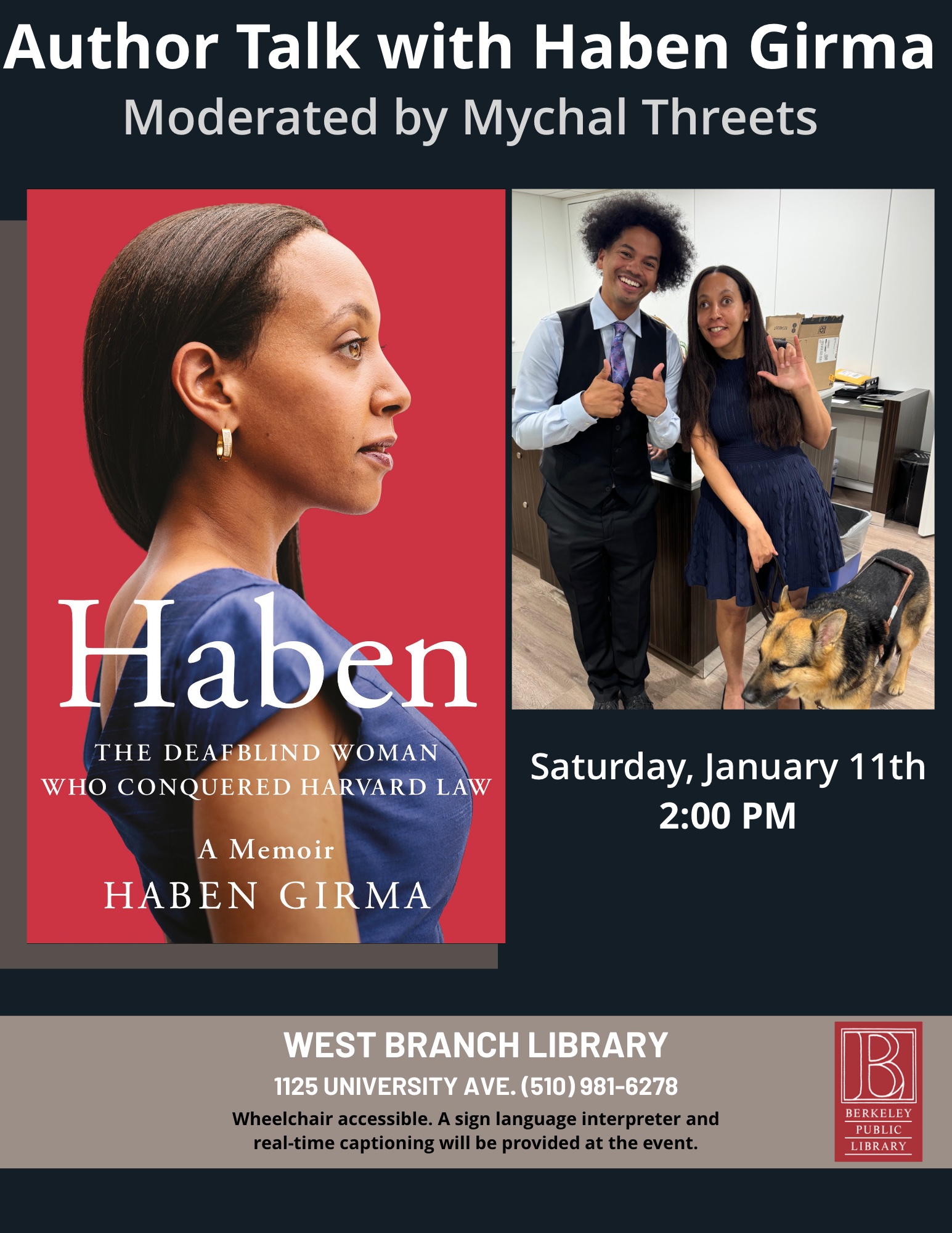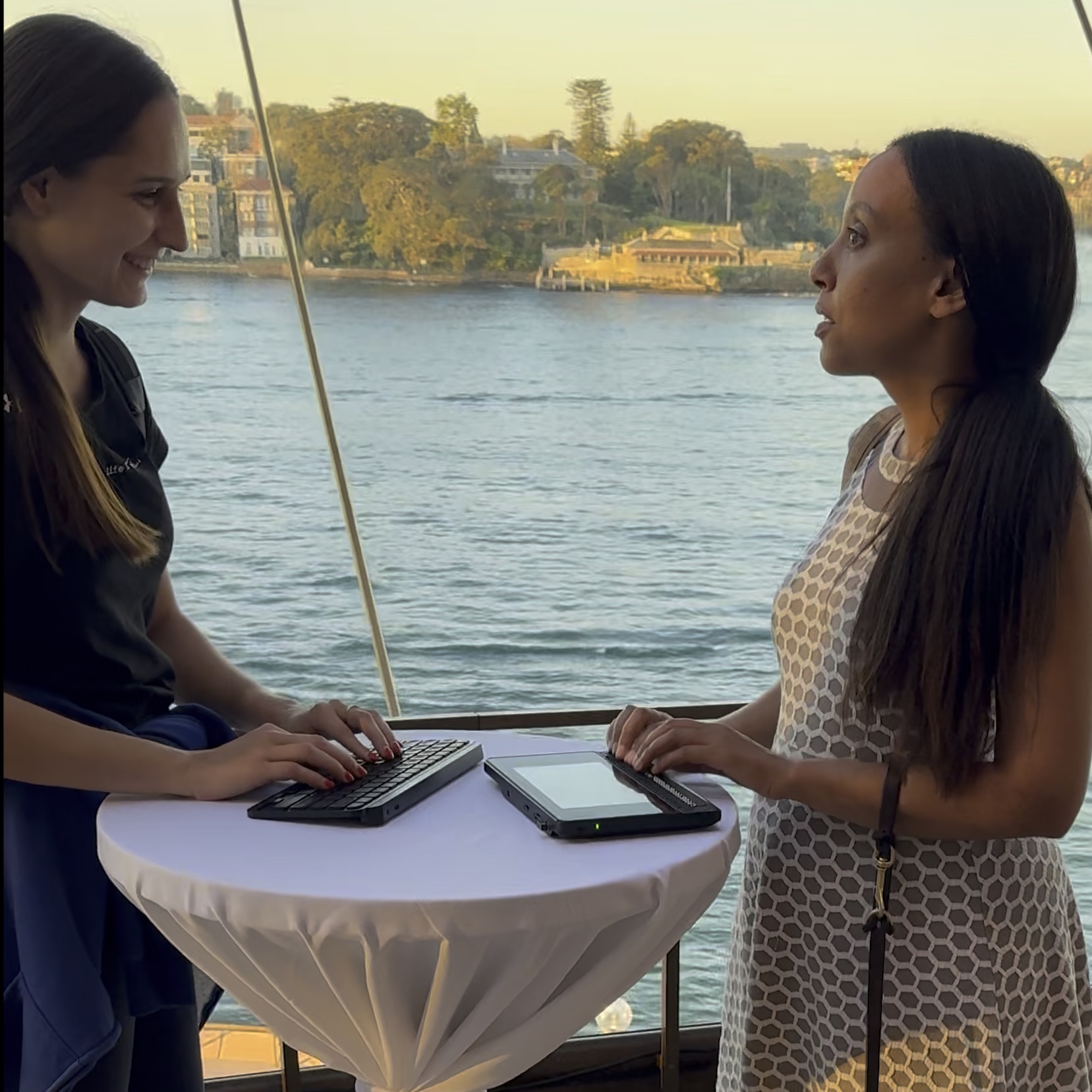Thank you to the Berkeley Public Library for hosting this conversation between Haben Girma and Mychal Threets! This clip is an excerpt from the library’s YouTube page.
Video description
Haben, Mychal, and an ASL interpreter sit in the front of a large room.
Haben, a black woman in her 30s, wears a colorful flowing dress. Her long black hair cascades over her shoulders. She reads from a braille computer on her lap as Mychal speaks. Mychal, a man in his 30s with brown skin and braids, smiles and speaks expressively. On the far right sits the interpreter, an older woman who is wearing a black shirt that contrasts with her light skin and hair.
Mychal: So someone has asked, “Do you think mental health and disabilities have a connection?”
Haben: Absolutely! One of the things I advocate for is teaching people that psychiatric disabilities are also protected under the Americans with Disabilities Act. And if you need accommodations due to psychiatric disabilities, mental health, you have a legal right to them, and you can ask for them.
And another piece of this is that ableism creates exhaustion, stress. It can trigger depression, it can create anxiety. For example, I get denied rides by taxis, Lyft and Uber regularly. And when I call one I’m nervous that there might be another denial.
So ableism, again, which is the belief and practice of treating disabled people as inferior to nondisabled people, that can definitely trigger and exacerbate mental health issues. So when we are working to remove ableism from our communities and make our communities more accessible, we’re also supporting the mental health of our communities.
Mychal: So I suffer from a great deal of mental health things. I suffer from depression. I suffer from anxiety. I suffer from panic attacks. I suffer from nightmares…nightmare disorders, and I suffer from PTSD. And I’m also currently on my own journey to discover if I’m diagnosed with autism and/or ADHD. So I deal with mental health for quite a bit. I’ve dealt with it since I was – now I know since I was eight years old, so I’ve had a long journey with mental health. And I mentioned all that to say I didn’t realize that a lot of people consider mental health to be a disability until I met Haben at the White House.
I was lucky enough. It was, it was Haben’s birthday. When we were at the White House. And I got to go to her birthday party, which is the unofficial bucket list item to go to Haben Girma’s birthday party. And I met her, I met her brilliant friends, which Haben is a brilliant person, and her friends are equally brilliant. We were talking about mental health, and they were emphatic in saying mental health is a disability, can be a disability. It is Disabled. And I think that’s a connection that we don’t often talk about.






